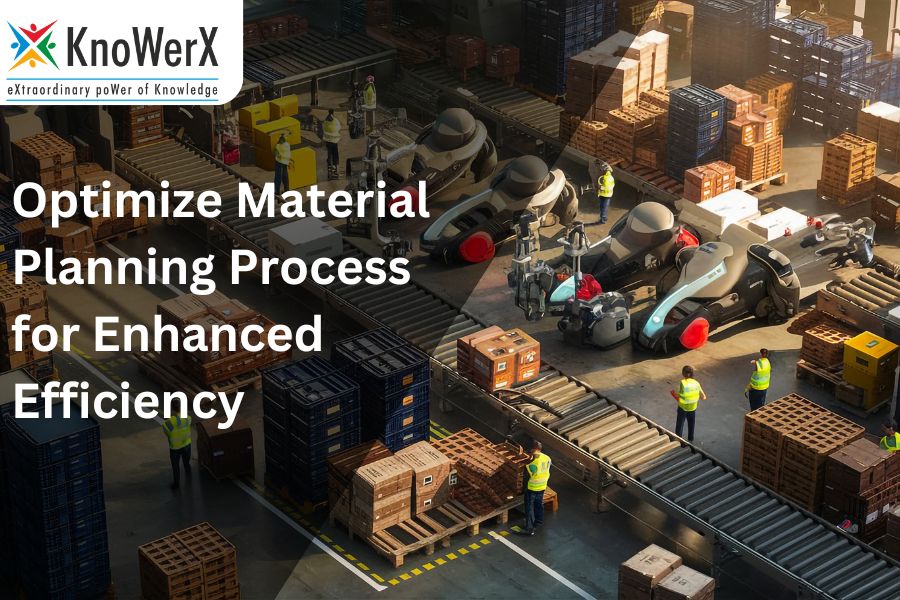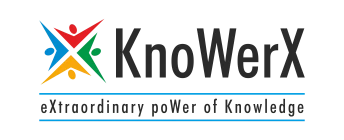Optimize Material Planning Process for Enhanced Efficiency

How Can You Optimize the Material Planning Process for Better Efficiency? In today’s fast-paced corporate environment, an efficient material planning strategy is critical to the smooth operation of supply chains. It serves as the foundation of production, guaranteeing that the appropriate materials are accessible when needed, in the appropriate quantities, and without causing overstocking or resource waste. However, it is possible to enhance even the most effective procedures. So, how can you maximise the effectiveness of your material planning process? Let’s look at the methods and techniques that can improve your operations and revolutionize your material planning. Understanding the Material Planning Process Before we talk about optimization, let’s define material planning clearly. Material planning is the process of anticipating the supplies and parts required for production, sourcing, and inventory control. Its goal is to ensure uninterrupted material availability to meet production deadlines. When carried out correctly, it guarantees smooth operations and lowers inventory expenses. At the core of material planning are three key components: Demand forecasting is the process of estimating the amount of materials required in light of anticipated demand. Inventory management is the process of maintaining a proper balance between having too little and too much inventory. Procurement planning is the process of managing the purchasing process to ensure materials arrive on time and within budget. A robust material planning procedure coordinates these components to achieve production goals while minimising expenses. Challenges in Material Planning However, material planning is not without its challenges. Businesses frequently face challenges like these: Inaccurate Demand Forecasting: It can be challenging to project future demand, and doing so incorrectly might result in overstocking or stockouts. Supply Chain Disruptions: Unexpected delays or supplier issues can disrupt even the most carefully planned material schedules. Costs Associated with Excessive Inventory: Keeping too little inventory might cause production delays, while keeping too much inventory can tie up money and increase storage costs. These challenges can cause operational inefficiencies and missed production targets, which is why optimizing the material planning process is so crucial. Best Practices for Optimizing the Material Planning Process Adopt automation and technology. Manually tracking items is a thing of the past. When it comes to optimizing material planning, technology is revolutionary. Material Resource Planning (MRP) software automates and streamlines the entire process. MRP systems give you real-time data and assist you in managing procurement, scheduling manufacturing, and keeping track of inventory levels. Automation solutions help expedite decision-making, decrease human error, and enhance departmental collaboration. Businesses can more correctly predict demand by incorporating technologies like artificial intelligence (AI) and data analytics into their forecasting models, which are based on historical data and market patterns. Increase the accuracy of demand forecasting. Precise demand forecasting is critical to efficient material planning. Incorrect demand projections negatively impact your entire material planning process. A data-driven strategy is necessary to increase forecasting accuracy. It is possible to more accurately forecast future demand by looking at previous data, customer orders, and market trends. Furthermore, you can improve your demand predictions by utilising sophisticated forecasting techniques like statistical models or machine learning. If your projections are more accurate, you will be in a better position to control material availability, reduce stockouts, and steer clear of unnecessary inventory. Improve inventory management techniques. Keeping an inventory balanced is required. While you don’t want to lock up your capital in excess inventory, you also want to make sure you have adequate stock to meet demand. One efficient way to reduce inventory is to use a Just-in-Time (JIT) strategy, which orders only what is required for manufacturing. Keeping safety stock on hand—a reserve of supplies in case demand unexpectedly surges or there is a breakdown in the supply chain—is another crucial strategy. Your unique business demands will determine the ideal ratio of JIT to safety stock, but striking this balance can help you cut expenses while maintaining efficient operations. Collaborative Supply Chain Management Material planning optimization takes place outside of your company’s borders too. Working together with distributors, suppliers, and other stakeholders is crucial. Improving openness through real-time communication and data exchange can help you respond more quickly to shifts in demand or disruptions in the supply chain. In times of heavy demand, for instance, a solid supplier alliance may help you swiftly access resources, and open communication with distributors guarantees that your items reach clients on schedule. Collaborative supply chains are more adaptable and durable, and they are essential to increasing the effectiveness of your material planning procedure. Benefits of Optimized Material Planning The benefits of optimizing your material planning process are numerous. You will notice: Lower operational expenses: You may minimise waste, keep costs down, and prevent extra inventory by using improved forecasting. Better Production Scheduling: Your production lines won’t experience expensive delays or disruptions if you have the appropriate materials on hand. Increased Customer Satisfaction: Your customers will be happier when you can consistently meet demand and deliver on time. Increased Efficiency All Around: When combined, these elements result in a more streamlined, effective business that can swiftly adjust to shifting market conditions. FAQs: Frequently Asked Questions End Notes At KnoWerX, we believe that optimization of your material planning process isn’t just a competitive advantage but it is also an imperative for long-term viability. By applying advanced technologies, improving the accuracy of demand forecasts, streamlining inventory management processes, and building closer collaboration in supply chains, you will significantly improve both operational efficiency and cost reduction. It’s not just a question of meeting the demand but doing so as efficiently as possible, to keep your business competitive and prosperous in a fluid market. Our Certified Demand Material Planner (CDMP) course will help the professional be better equipped to handle all these strategies of optimization. Since business is changing day in and day out, periodic review and refinement of material planning processes are very important. KnoWerX will provide you with the necessary skills to be able to continuously tune and further optimize your approach by keeping your operations at an optimal level and putting
